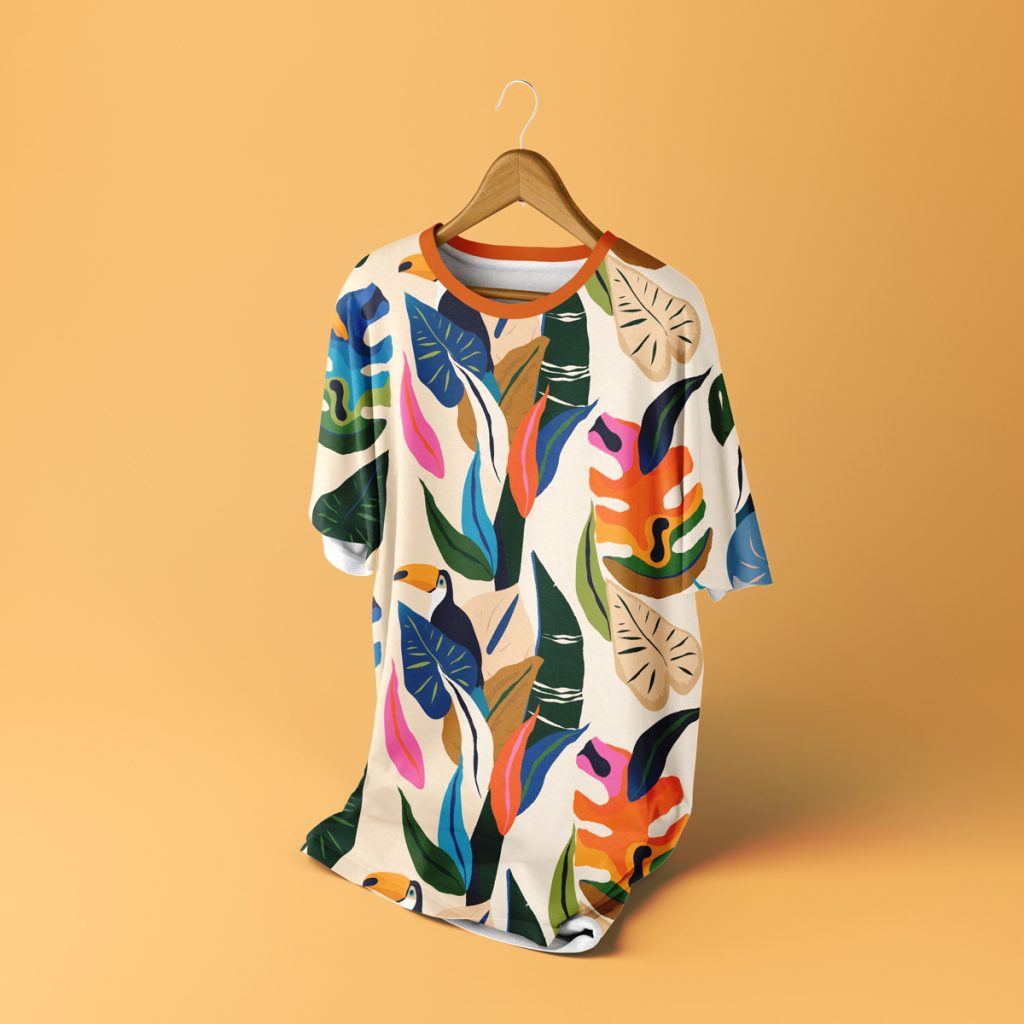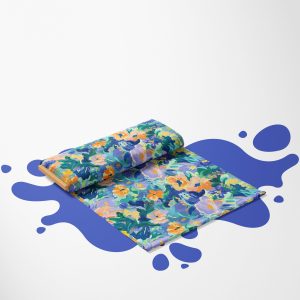In today’s era of constant search for modern solutions in production and design, sublimation printing stands out as a technology revolutionizing the world of colors. It enables the transfer of durable and vibrant colors onto various materials, from clothing to gadgets. Why has sublimation printing become a key player in the production world, revolutionizing the way we create colorful everyday items? Let’s explore its practical applications, benefits, and ideal materials, gaining insight into the innovative technology that sets new standards in creativity and durability.
Table of Contents
- What is Sublimation Printing?
- How does the sublimation printing process look like?
- Choosing the right fabric for sublimation printing
- Applications of Sublimation Printing
- Advantages of Sublimation Printing
What is Sublimation Printing?
Sublimation printing is a printing technique in which special sublimation inks are used to transfer an image onto the material’s surface through the sublimation process. This process involves converting a substance directly from a solid to a gaseous state without passing through a liquid phase. In sublimation printing, the inks contain pigments that, under heat, transform into a gas, permeating the material’s structure and fixing the image.
Sublimation printing is commonly used in the production of sportswear, gadgets, flags, banners, and even in interior design. Its advantages include durability and high image quality, as sublimation pigments penetrate the material’s structure, ensuring the image won’t wear or fade.

How does the sublimation printing process look like?
- Image Preparation: The process begins with preparing the image to be transferred onto the material.
- Image Transfer to Material: After printing the image on sublimation paper, it is transferred to the material. The printed paper and the target material are carefully placed together and subjected to pressure.
- Heating: The paper and material set in a sublimation press are exposed to high temperatures. The sublimation pigments in the ink turn from a solid to a gaseous state under this heat.
- Sublimation: In the gaseous phase, the pigments permeate the material’s structure. As the temperature drops, the gas returns to a solid state, permanently incorporating the pigments into the material’s structure and creating a durable image.
- Cooling and Finishing: After sublimation, the material is cooled, stabilizing the transferred image. The sublimation printing process is considered complete, resulting in a product characterized by durability and resistance to wear since the image is permanently integrated with the material.
Choosing the right fabric for sublimation printing
Sublimation printing works best on fabrics made of polyester due to its specific properties. Polyester is a synthetic fiber that readily undergoes the sublimation process, resulting in a durable and high-quality print. Here are a few reasons why polyester is often the preferred choice for sublimation printing:
- Excellent Sublimation Capability: Polyester excels at absorbing sublimation pigments during the heating process, allowing deep penetration of pigments for intense and long-lasting colors.
- Durability and Fade Resistance: Sublimation printing on polyester is durable and resistant to fading due to UV exposure or frequent washing. Sublimation pigments form a permanent bond with polyester fibers, ensuring long-lasting and vivid images.
- Fast Drying: Polyester tends to dry quickly, which is advantageous in the sublimation process. Fast drying prevents image smudging and allows for sharp details.
- Elasticity and Lightweight: Polyester fabrics are often elastic and lightweight, making them ideal for producing sportswear, outdoor clothing, or gadgets. The material’s elasticity facilitates image transfer on curved surfaces.
It’s worth noting that sublimation printing can also be applied to fabrics containing some cotton, but the results may differ from those obtained on polyester. Cotton does not absorb sublimation pigments as efficiently as polyester, potentially resulting in a less intense image and reduced durability. Therefore, it is generally recommended to use materials primarily composed of polyester or a polyester-cotton blend for sublimation printing to achieve optimal results.
Applications of Sublimation Printing
Sublimation printing finds applications in various fields, enabling the production of high-quality, durable, and colorful products.
- Sportswear: Sublimation printing is particularly popular in the production of sportswear, including T-shirts, shorts, hoodies, and swimwear. The ability to achieve durable and full-color patterns makes it a preferred technique in this industry.
- Flags and Banners: Thanks to sublimation printing’s ability to transfer images onto fabrics with excellent durability and color intensity, this technique is widely used in the production of flags, banners, and advertising banners.
- Home Textiles: Towels, pillows, bed linens, and curtains are additional products where sublimation printing is applied. The capability to achieve full-color and durable patterns makes these textiles attractive to customers seeking unique and original home products.
- Bags and Backpacks: Sublimation printing allows for the creation of unique designs on bags and backpacks, making them appealing to individuals looking for distinctive everyday accessories.
- Interior Décor: Interior décor elements, such as curtains, decorative pillows, or canvas prints, can be adorned using sublimation printing, enabling the creation of a personalized living space.

Advantages of Sublimation Printing
Sublimation printing offers numerous advantages that contribute to its widespread use in various industries:
- Durable and Fade-Resistant Images: Sublimation pigments penetrate the material’s structure, resulting in durable and fade-resistant images even when exposed to UV radiation or frequent washing.
- Full Range of Colors: Sublimation printing allows for the reproduction of a full range of colors, enabling the creation of high-quality images with precision and color intensity.
- Direct Transfer to Fabric: The sublimation process enables the direct transfer of the image to the fabric, eliminating the need for additional layers or films.
- Durability on Different Materials: Sublimation printing can be applied to various materials, especially polyester, making it a versatile technique in the production of clothing, gadgets, and other products.
- High Resolution and Image Sharpness: Sublimation printing allows for high resolution and image sharpness, crucial for capturing details and intricate patterns.
- No Noticeable Print Layer: In contrast to some other techniques, sublimation printing leaves no noticeable print layer on the surface, resulting in a smooth and natural effect.
- Material Flexibility: Sublimation printing is effective on flexible materials, making it ideal for the production of sportswear and other flexible or stretchable items.
- Fast Drying: The sublimation process includes the rapid drying of inks, contributing to a shorter production time.
- Personalization and Small Production Runs: Sublimation printing allows for easy personalization, which is attractive to customers seeking individualized products. Additionally, this technology is efficient for small production runs.
- Environmental Friendliness: Unlike some other techniques, sublimation printing does not generate waste in the form of transfer paper, as sublimation inks are directly transferred to the material.
Sublimation printing is a versatile technique that combines durability, high quality, and cost-effectiveness. Its wide application in various industries makes it an attractive solution for manufacturers of clothing, gadgets, and decorative items. Through this technique, anyone can easily create unique and durable products that will retain their colors and shape over time. Explore the fascinating world of sublimation printing and discover the possibilities it holds for your projects and business!




